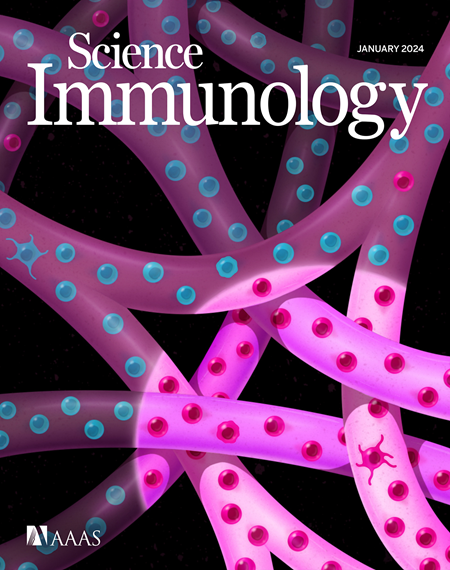Brain sensing of metabolic state regulates circulating monocytes
IF 17.6
1区 医学
Q1 IMMUNOLOGY
引用次数: 0
Abstract
Changes in energy availability alter the dynamics of circulating immune cells. The existing view is that these effects are due to altered nutrient levels affecting peripheral tissue metabolism. Here, using mice and genetic approaches to manipulate the activity of distinct molecularly defined neurons, we show that the brain’s perception of hunger and satiety alone is sufficient to drive these immune changes. Hunger-promoting Agouti-related peptide (AgRP) neurons in the hypothalamus were both sufficient and necessary to reduce circulating Ly6CHi classical monocytes during fasting. Mechanistically, these neurons suppressed hepatic mammalian target of rapamycin signaling via sympathetic regulation, decreasing circulating chemokine ligand 2 and monocyte numbers. AgRP neuron–induced corticosterone release and glucocorticoid receptor activation played a permissive role in this process. These changes in monocyte dynamics can occur independently of actual nutrient levels, revealing an unexpected brain-mediated control of peripheral immunity in response to perceived variation in energy state.

大脑对代谢状态的感知调节循环单核细胞
能量可用性的变化改变了循环免疫细胞的动力学。现有的观点认为,这些影响是由于改变了影响外周组织代谢的营养水平。在这里,我们使用小鼠和遗传方法来操纵不同分子定义的神经元的活动,我们表明,大脑对饥饿和饱腹感的感知本身就足以驱动这些免疫变化。下丘脑促饥饿agouti相关肽(AgRP)神经元在禁食期间减少循环Ly6C Hi经典单核细胞是充分和必要的。从机制上讲,这些神经元通过交感调节抑制肝哺乳动物雷帕霉素信号靶,减少循环趋化因子配体2和单核细胞数量。AgRP神经元诱导的皮质酮释放和糖皮质激素受体激活在这一过程中起纵容作用。单核细胞动力学的这些变化可以独立于实际营养水平而发生,揭示了一种意想不到的脑介导的外周免疫控制,以响应感知到的能量状态变化。
本文章由计算机程序翻译,如有差异,请以英文原文为准。
求助全文
约1分钟内获得全文
求助全文
来源期刊

Science Immunology
Immunology and Microbiology-Immunology
CiteScore
32.90
自引率
2.00%
发文量
183
期刊介绍:
Science Immunology is a peer-reviewed journal that publishes original research articles in the field of immunology. The journal encourages the submission of research findings from all areas of immunology, including studies on innate and adaptive immunity, immune cell development and differentiation, immunogenomics, systems immunology, structural immunology, antigen presentation, immunometabolism, and mucosal immunology. Additionally, the journal covers research on immune contributions to health and disease, such as host defense, inflammation, cancer immunology, autoimmunity, allergy, transplantation, and immunodeficiency. Science Immunology maintains the same high-quality standard as other journals in the Science family and aims to facilitate understanding of the immune system by showcasing innovative advances in immunology research from all organisms and model systems, including humans.
 求助内容:
求助内容: 应助结果提醒方式:
应助结果提醒方式:


